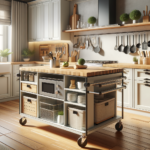Understanding Emergencies: The Importance of Swift Action
Emergencies often strike without warning, demanding immediate attention and swift action. In the context of home maintenance, a leak can quickly escalate from a minor inconvenience to a major disaster if not addressed promptly. The urgency of the situation lies in the potential for extensive damage, costly repairs, and even health risks associated with mold and mildew. Understanding the nature of emergencies and the critical need for rapid response is essential for homeowners and property managers alike.
Leaks, whether from plumbing, roofing, or appliances, can lead to significant water damage. This damage not only affects the structural integrity of a building but also poses a risk to electrical systems and personal belongings. Furthermore, stagnant water and damp conditions create an ideal environment for mold growth, leading to health concerns for occupants. Therefore, recognizing the signs of leaks and acting immediately can prevent further complications.
In an emergency, the first step is to assess the situation and determine the source of the leak. This may involve turning off the main water supply or isolating the affected area to minimize damage. Quick decision-making and a proactive approach are crucial in mitigating risks and ensuring safety. By understanding the dynamics of emergencies, individuals can better prepare and respond effectively to protect their homes and families.
- Immediate response is key to minimizing damage.
- Understanding the source of the leak helps in quick resolution.
- Preventing mold growth requires prompt action.
Identifying Leaks: Common Sources and Warning Signs
Leaks can originate from various sources within a home, and identifying them early is crucial in preventing extensive damage. Common sources of leaks include plumbing systems, roofs, and household appliances. Each source presents unique challenges and requires a specific approach for detection and repair.
Plumbing leaks are often found in kitchens, bathrooms, and basements. They can result from faulty pipes, worn-out seals, or joint failures. Signs of plumbing leaks include damp spots on walls or ceilings, unexplained increases in water bills, and the sound of running water when no taps are open. Regular inspections and maintenance can help in early detection and prevention.
Roof leaks, on the other hand, are typically caused by damaged shingles, clogged gutters, or poor flashing. These leaks may manifest as water stains on ceilings or walls, mold growth, or visible roof damage. Timely roof inspections, especially after severe weather, can prevent leaks from developing into more serious issues.
Appliances such as dishwashers, washing machines, and water heaters are also common culprits of leaks. Regular maintenance and checking for any signs of wear and tear can prevent unexpected leaks. By understanding the warning signs and common sources of leaks, homeowners can take proactive measures to safeguard their properties.
Repair Strategies: Effective Solutions for Leak Management
Once a leak is identified, implementing an effective repair strategy is essential to restore normalcy and prevent future occurrences. The approach to repair depends on the source and severity of the leak, as well as the materials involved. Understanding the available options and selecting the appropriate method can make a significant difference in the outcome.
For plumbing leaks, repairs may involve replacing damaged pipes or seals, tightening loose fittings, or applying sealants to minor leaks. In some cases, professional plumbers may be required to address complex issues and ensure compliance with local codes and standards. Regular maintenance and inspections can also help in identifying potential problems before they escalate.
Roof leaks often require more extensive repairs, such as replacing damaged shingles, repairing flashing, or sealing gaps. Engaging a professional roofer is advisable to ensure the integrity of the roof and prevent further damage. Additionally, maintaining clean gutters and downspouts can reduce the risk of future leaks.
Appliance leaks may be resolved by replacing faulty components, such as hoses or seals, or by performing routine maintenance. Ensuring proper installation and following manufacturer guidelines can also help in preventing leaks. By adopting effective repair strategies, homeowners can protect their investments and maintain a safe, comfortable living environment.
Preventative Measures: Safeguarding Against Future Leaks
Prevention is always better than cure, and taking proactive steps to safeguard against leaks can save time, money, and stress in the long run. Implementing preventative measures involves regular maintenance, timely inspections, and adopting best practices for home care.
Regular inspections of plumbing systems, roofs, and appliances are essential in identifying potential issues before they develop into significant problems. This includes checking for signs of wear and tear, ensuring proper drainage, and maintaining clean and unobstructed gutters. Scheduling professional inspections annually can provide additional peace of mind and expert insights.
Homeowners can also invest in leak detection systems and smart home technology to monitor water usage and detect anomalies. These systems can provide real-time alerts, allowing for immediate action and minimizing damage. Additionally, educating household members about the importance of leak prevention and encouraging responsible water usage can contribute to overall home safety.
By prioritizing preventative measures, individuals can reduce the likelihood of leaks and enhance the longevity and value of their properties. A proactive approach not only protects physical assets but also ensures a safe and healthy living environment for all occupants.
Conclusion: The Value of Preparedness and Proactive Maintenance
In conclusion, understanding the dynamics of emergencies, identifying leaks, and implementing effective repair strategies are crucial in managing home maintenance challenges. By adopting preventative measures and staying informed, homeowners can protect their properties and ensure a safe, comfortable living environment.
Preparedness and proactive maintenance are key to minimizing the impact of leaks and emergencies. By staying vigilant and taking timely action, individuals can prevent small issues from escalating into major disasters. Ultimately, the value of preparedness lies in the peace of mind it provides, knowing that one’s home is safeguarded against unexpected challenges.
As we navigate the complexities of homeownership, let us remember the importance of vigilance, maintenance, and swift action in preserving the sanctity of our living spaces. Through informed decisions and proactive measures, we can create safe havens that withstand the tests of time and nature.







